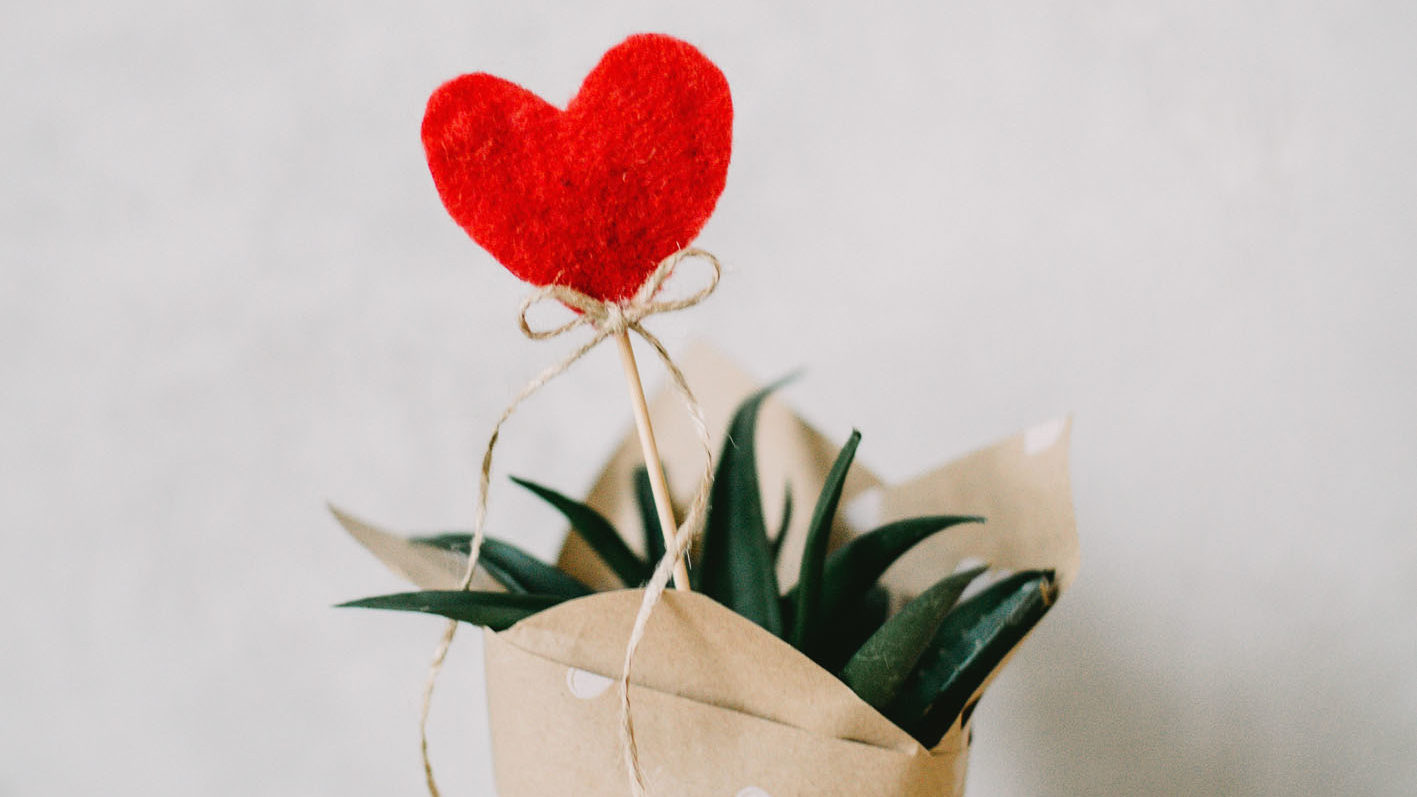Top 5 Eco-Friendly Valentine's Ideas - How To Have a Sustainable Valentine’s Day

Looking for ways to tell your significant other that you love them, without the need for plastic and additional waste? Below we have some ideas and tips for celebrating the day in an eco-friendly way!
1. Are cards environmentally friendly?
Usually the first step when planning the perfect day – the Valentine’s Card. Consider avoiding the usual glittery, laminated supermarket cards and add a more personal touch by purchasing eco-friendly options instead.
Cards made from wildflower seeded paper are a fantastic choice, which can be planted in the springtime to create a beautiful display. Not only this but growing wildflowers in your garden is super beneficial for local wildlife – especially the bees!
We stock a range of wildflower cards, which can all help you express your appreciation for that special person in your life.
Alternatively, consider if you really need a card at all! If you know that your other half will be more interested in the gift you’ve purchased – perhaps stick a thoughtful handwritten note on this instead. E-cards are also a great idea - and these can be purchased last minute if organisation is not your strong point!
2. Where can I buy eco-friendly flowers?
A Valentine’s Day staple – flowers. As beautiful as they look, unfortunately they have a huge environmental impact, all for something that dies off quickly on your kitchen table.
Only 14% of the flowers bought in the UK are grown here, the rest are imported and especially so at Valentine’s. This means that the carbon footprint of your roses is massively high, as they are grown half-way across the world in Kenya, or in hothouses in the Netherlands. Large amounts of pesticides are used to ensure high yield in the crops, which then spill into our rivers and oceans and harm wildlife.
When buying your bunch of flowers, opt for the ‘green’ choice and try to purchase flowers that are UK grown, or ethically sourced. These bunches may cost you extra, but the quality is always significantly better and will last longer!
If you are on a budget or want something that will last, consider an eco-friendly alternative entirely - such as pot plants that will continue to grow and thrive. Usually available to buy with a decorative pot, the gift recipient will be able to think of you when they see it in their home for a long time to come.
3. Benefits of buying ethically sourced chocolates
Another obvious Valentine's go-to! Gifting chocolates is a near fool-proof way to win the approval of your significant other.
When choosing the best box – consider the ethics and sustainability as well as flavour choice and price. Fair trade chocolate often adds that extra special touch, and will taste all the better knowing that the farmer has received a fairer wage.
There are many great ethical chocolate companies out there, who encourage you to think about the impact your food has on the environment. By buying from these companies, you are not only impressing your partner (these chocolates are of much higher quality and taste) – but are also taking another step towards living sustainably.
4. Experiences vs physical gifts
Instead of buying a physical gift for the sake of having something to unwrap, consider gifting your partner with an ‘experience’. Not only does this avoid the usual plastic products that flood the supermarkets in February, but it can also be more personal and appreciated.
Try cooking a meal at home, using fresh ingredients from local markets to really impress your date. This is something you could even do together, to create a truly romantic evening. And by time you’ve cooked yourselves a three-course spread, you’ll be starving and enjoy it even more!
Alternatively, baking cupcakes or brownies is also charming activity for your Valentine’s Day. Consider buying eco-friendly bakeware, and make it fun – decorate cakes for each other!
Running them a hot bath is also a perfect way to express your feelings, or perhaps a massage?
If you do prefer to give a physical gift, try eco-friendly wrapping methods such as Furoshiki – especially as you can reuse the wrap next year. Don’t be overwhelmed by the process – there are some great step by step guides, which can help you have a sustainable Valentine’s Day.
5. What are the most eco-friendly candles?
Who doesn’t love a candle? Unfortunately, typical candles are made of paraffin from fossil fuels – meaning the environmental impact can be massive. When burnt, paraffin candles also release harmful materials into the air of your home – so probably best to avoid!
Soy candles are often quoted as an eco-friendly option, however only if the soy is ethically grown without causing further deforestation. Therefore, when thinking about purchasing a candle as a Valentine’s gift, consider beeswax or coconut wax – ethically and naturally sourced is always best.
Not only will these tips help you to celebrate the day in an eco-friendly way, but they can also help you to really connect with your partner. By avoiding the typical 'tack', (such as balloons - which are really harmful to wildlife when littered), you can spend the day guilt-free knowing your gifts are appreciated by both your significant other and the planet!
